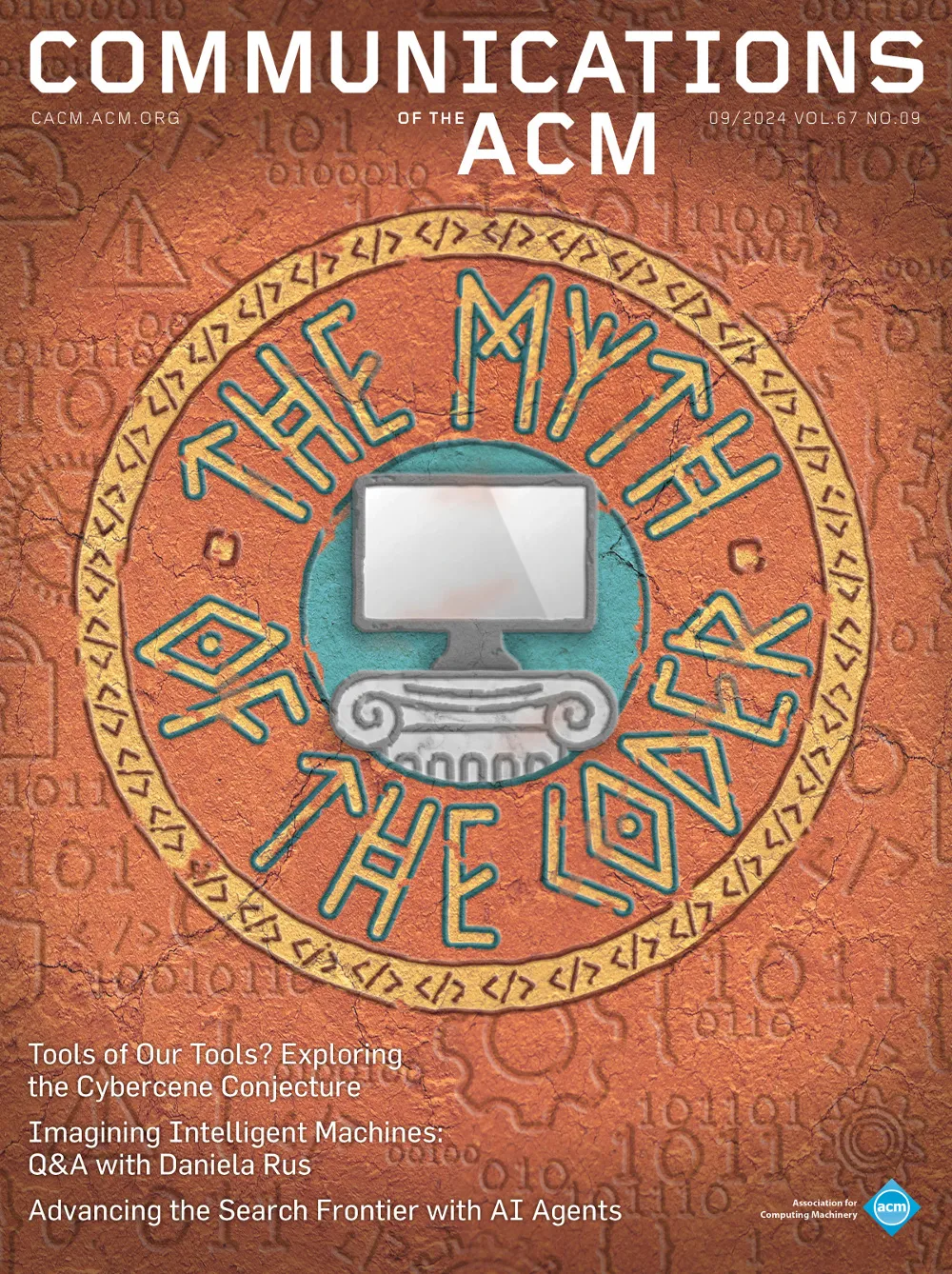September 1978 - Vol. 21 No. 9

Features
An algorithm using symbolic techniques for the Bel-Petrov classification of gravitational fields
In this note, an algorithm is presented for the symbolic calculation of certain algebraic invariants of the Weyl tensor which permits the determination of the Bel-Petrov types of a gravitational field. This algorithm, although more specialized than that of D'Inverno and Russell-Clark, requires neither the use of a special coordinate system nor the spin coefficient formalism. The algorithm has been implemented in FORMAC and is designed to complete the classification scheme proposed by Petrov in his book. An appendix contains examples illustrating the use of the algorithm.
Hybrid simulation models of computer systems
This paper describes the structure and operation of a hybrid simulation model in which both discrete-event simulation and analytic techniques are combined to produce efficient yet accurate system models. In an example based on a simple hypothetical computer system, discrete-event simulation is used to model the arrival and activation of jobs, and a central-server queueing network models the use of system processors. The accuracy and efficiency of the hybrid technique are demonstrated by comparing the result and computational costs of the hybrid model of the example with those of an equivalent simulation-only model.
A practical interprocedural data flow analysis algorithm
A new interprocedural data flow analysis algorithm is presented and analyzed. The algorithm associates with each procedure in a program information about which variables may be modified, which may be used, and which are possibly preserved by a call on the procedure, and all of its subcalls. The algorithm is sufficiently powerful to be used on recursive programs and to deal with the sharing of variables which arises through reference parameters. The algorithm is unique in that it can compute all of this information in a single pass, not requiring a prepass to compute calling relationships or sharing patterns. The algorithm is asymptotically optimal in time complexity. It has been implemented and is practical even on programs which are quite large.
A model for verification of data security in operating systems
Program verification applied to kernel architectures forms a promising method for providing uncircumventably secure, shared computer systems. A precise definition of data security is developed here in terms of a general model for operating systems. This model is suitable as a basis for verifying many of those properties of an operating system which are necessary to assure reliable enforcement of security. The application of this approach to the UCLA secure operating system is also discussed.
Generalized working sets for segment reference strings
The working-set concept is extended for programs that reference segments of different sizes. The generalized working-set policy (GWS) keeps as its resident set those segments whose retention costs do not exceed their retrieval costs. The GWS is a model for the entire class of demand-fetching memory policies that satisfy a resident-set inclusion property. A generalized optimal policy (GOPT) is also defined; at its operating points it minimizes aggregated retention and swapping costs. Special cases of the cost structure allow GWS and GOPT to simulate any known stack algorithm, the working set, and VMIN. Efficient procedures for computing demand curves showing swapping load as a function of memory usage are developed for GWS and GOPT policies. Empirical data from an actual system are included.
A controlled experiment in program testing and code walkthroughs/inspections
This paper describes an experiment in program testing, employing 59 highly experienced data processing professionals using seven methods to test a small PL/I program. The results show that the popular code walkthrough/inspection method was as effective as other computer-based methods in finding errors and that the most effective methods (in terms of errors found and cost) employed pairs of subjects who tested the program independently and then pooled their findings. The study also shows that there is a tremendous amount of variability among subjects and that the ability to detect certain types of errors varies from method to method.
Insertion and deletion algorithms are provided for the class of right (or one-sided) brother trees which have O (log n) performance. The importance of these results stems from the close relationship of right brother trees to one-sided height-balanced trees which have an insertion algorithm operating in O (log2 n). Further, although both insertion and deletion can be carried out in O (log n) time for right brother trees, it appears that the insertion algorithm is inherently much more difficult than the deletion algorithm—the reverse of what one usually obtains.
Event manipulation for discrete simulations requiring large numbers of events
The event-manipulation system presented here consists of two major parts. The first part addresses the familiar problem of event scheduling efficiency when the number of scheduled events grows large. The second part deals with the less apparent problem of providing efficiency and flexibility as scheduled events are accessed to be executed. Additional features and problems dealt with include the proper handling of simultaneous events; that certain events must be created, scheduled, and executed at the same points in simulated time; that infinite loops caused by the concatenation of such “zero-time” events are possible and must be diagnosed; that maintaining various event counts is practical and economical; and that a capability for handling “time-displaceable” events is desirable and possible.
A note on virtual memory indexes
In [4] Maruyama and Smith analyzed design alternatives for virtual memory indexes. The indexes investigated were those modeled on the structure of VSAM [5] which are closely related to B-trees [1]. Maruyama and Smith presented alternatives for search strategies, page format, and whether or not to compress keys. They made a comparative analysis based on the average cost of processing the index for retrieval of a key with its associated data pointer (or a sequence of keys and data pointers). The analysis showed that the optimal solution depends on machine and file characteristics and they provided formulas for selecting the best alternative. In this brief note1 we propose that another alternative for the page format be considered. The basic idea is to replace the sequential representation within a page by a linked representation. The main advantage of this method is realized in the construction (and maintenance) phase of the index. Although this phase is difficult to analyze quantitatively—as alluded to in [4]—we provide data to substantiate our claim of a net saving in construction cost without any corresponding loss in the average retrieval cost. In the ensuing discussion we assume that the reader is familiar both with B-trees and the paper of Maruyama and Smith [4].
Simulations of dynamic sequential search algorithms
In [3], R.L. Rivest presents a set of methods for dynamically reordering a sequential list containing N records in order to increase search efficiency. The method Ai (for i between 1 and N) performs the following operation each time that a record R has been successfully retrieved: Move R forward i positions in the list, or to the front of the list if it was in a position less than i. The method A1 is called the transposition method, and the method AN-1 is called the move-to-front method.



